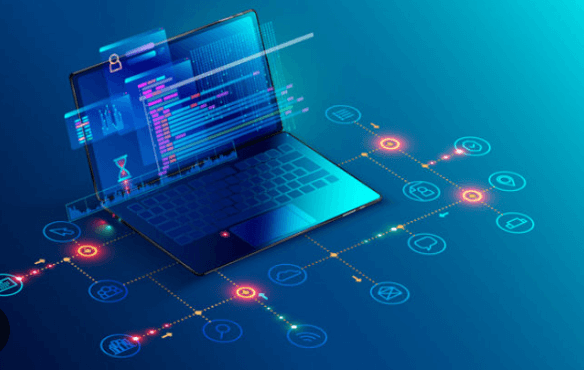Power Outages Demystified – How Electricity Companies Handle Emergencies

A power outage leaves people in the dark, disrupts appliances and electronics, affects heating or cooling, and cuts access to water. In fact, according to a survey by BELFOR Property Restoration, blackouts are on the rise.
How can you tell when a power outage is an emergency and not just an inconvenience? Start by noticing whether the problem affects your neighbors, too.
How Electricity Companies Handle Emergencies
Learning how to read electric meter to handle emergencies is essential. An emergency can occur from any number of things, from weather to equipment failure. It may be something manageable, or it could lead to a power outage that lasts for days, depending on the severity of the situation. Knowing what’s a minor versus major incident can help you plan for the unexpected and protect your family.
Keep a lights-out kit with flashlights, fresh batteries, battery-operated radio, matches or candles, bottled water, non-perishable food, and blankets. Also, ensure your cell phone has a charged backup charger and is set to receive emergency alerts. Try to leave one light switch on in your home to let you know when the power is restored. Check the status of your local power company’s outage map to determine how widespread an emergency is and when you can expect the lights to be back on.
It’s a good idea to talk with your family and write down a list of essential emergency contacts (family, friends, work, doctor) you can refer to during an outage. It would help if you also considered storing necessary documents (birth certificates, passports, insurance policies) in waterproof containers and designating an out-of-town contact person who can assist if you need to evacuate your home. Some states have also implemented moratoriums on disconnecting impacted customers or imposing late fees during an energy crisis, such as the COVID-19 pandemic.
Planned Outages
Planned outages occur when an electric utility shuts down part of a power plant to perform upgrades and maintenance. Depending on the project’s scope, getting the facility back online may take weeks or even months.
These outages are necessary for the long-term health and reliability of the system, but they still disrupt customers’ daily lives. For this reason, it’s essential to communicate clearly with residential and business customers about planned outages so they can prepare accordingly.
Your energy company will usually mail letters and door hangars to affected customers with the details of a planned outage three days in advance. You can also sign up for additional electronic communications to receive notifications via text, email, automated phone recording, or TTY seven to 11 days before an outage.
Before a planned outage, you can minimize disruptions by turning off electrical equipment (like computers and televisions) through the circuit breaker or unplugging devices. This will help prevent damage to sensitive electronics when the power goes back on. You should also shut off any automatic garage doors and gates and know how to operate them manually. Also, if you have medical equipment that requires electricity, notify your healthcare provider and make arrangements for alternate care if necessary.
Unplanned Outages
As the name suggests, unplanned outages occur when something unexpected interrupts the normal flow of electricity. This could be a natural disaster like a storm, tornado, hurricane, or wildfire that damages power lines, an accident, or vandalism that disrupts equipment.
Unlike planned outages, these events cannot be predicted or prevented and can have significant impacts. They can close retail businesses, cause food to spoil and cut air conditioning during a heat wave, and impact medical devices.
The most common cause of unplanned outages is human error or equipment failure, especially at the distribution network level. The most vulnerable areas must serve a large population and have limited infrastructure exposed to severe weather conditions, such as hurricanes or winter snowstorms.
While these events are rare, they can happen. When they do, the campus community must be prepared with a plan of action. The first step is to contact your local distributor to report the outage and ask about estimated timelines for restoration. Then, monitor information sign boards and alerts on your phone, TV, or radio. If you are signed up for notifications, the distributor may text or call to let you know what’s happening. Consider having a backup generator or power station to keep your home running when the lights go out.
Restoration
At the network level, unplanned power outages occur when something goes wrong with the distribution lines that deliver electricity to homes and businesses. This can be anything from lightning strikes, motor accidents, and bushfires to general equipment failure. It is what most people think of when they hear the term’ power outage’. This power disruption is often reported to your local electricity distributor using a dedicated outage hotline.
Planned outages can also be used to carry out maintenance and repair work on electricity infrastructure and networks. This is especially important in regions with high populations that require many generating plants to support their needs and to deal with extreme weather events such as heat waves or cold snaps.
Preparing your home is the best way to stay safe during an extended power outage. Create a support network and ensure you can access communication devices without home power, such as a crank, battery radio, and a non-cordless home phone. Stock your home with food and water supplies and a thermometer.
While power outages are becoming less frequent and lengthy as a percentage of total consumer usage, they can still affect us all. Be prepared to stay safe during these emergencies by understanding the different types of outages and how they’re handled.




